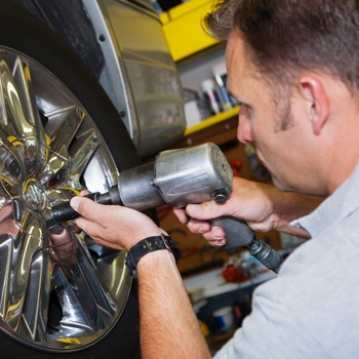
It is time to replace your car’s brake pads. You hear your brakes making a noise, or braking appears soft and doesn’t seem to grab like it used to, so you seek out an auto shop to perform the repairs. Before dropping off your car and agreeing to the repairs, put on the brakes and do your homework. Brake pads and rotors are not created equal.
Shops need to keep their profit margin in mind, and in doing so, parts play a role in this decision. If you are not aware of the parts your shop is using, you might want to inquire what type of pads they will be installing, where they purchase their parts from, and if they are made in the U.S. or China.
If you are going to replace the pads yourself, do you know what type of pad your vehicle uses? The following explains each type of brake pad in detail.
Semi-Metallic Brake Pads
These types of brake pads are made from about 30-65 percent metal, and are commonly made out of steel wool, wire, copper or other metal materials. These types of brake pads are considered to be very durable, but also may wear brake rotors faster. Also, semi-metallic brake pads may not function well in very low temperatures.
Non-Asbestos Organic
This type of brake pad, commonly referred to as NAO, is made from organic materials such as fiber, glass, rubber and even Kevlar. These types of pads are usually softer and don’t create much noise, but they tend to wear faster and create a lot of dust.
Low-Metallic NAO
These are made primarily from an organic formula mixture, with small amounts of copper or steel added to help with heat transfer and provide better braking. Because of the added metal, there is usually a considerable amount of brake dust and these pads are often noisy.
Ceramic Brake Pads
Ceramic brake pads are composed primarily of ceramic fibers and other filler materials. While ceramic brake pads are usually more expensive than other types of pads, they are cleaner and produce much lower noise levels. Also, they provide for excellent braking and don’t cause a lot of wear on the brake rotors. Personally, I am not a fan of products made in China. We have all heard the saying that China-made products are equal to America-made. Not so. In 2002, the U.S. government examined this very claim. American companies were afraid that Chinamade mirrored products would hurt the American market for aftermarket parts.
Here is what they determined when it came to the type of metals used. Brake rotors are generally produced from gray iron, which has high wear resistance, excellent machinability, a relatively high coefficient of friction, and vibration absorption. This metal is also easily cast into rather complex shapes at a relatively low cost. After the raw casting is formed, the article undergoes machining, such as grinding and drilling, to reach the finished product. Unfinished brake rotors have undergone some grinding or turning, but are not functional as brake system products. Semifinished brake rotors have also undergone initial grinding and have been drilled or pierced. The commission also determined that OEM rotors and drums and aftermarket rotors and drums, although physically similar, were different products made by different manufacturers for different markets.
As a fleet manager and automotive mechanic, I have used both Americaand China-made products. My personal experience proved that the America-made outlasted the Chinamade products. The distortion was less on the America-made parts. In one instance, the China-made rotor used on a truck actually came apart after heavy use within three months, causing the need to replace the rotors again. The part was under warranty, but the downtime cost the company.
Brakes are a vital part in keeping a vehicle’s occupants safe. When it comes to replacing and purchasing parts for a brake repair, I will pay the extra for America-made products over China-made. The one factor that may be your decision maker is your financial situation. Make the right choice. After all, your life depends on it. Happy Motoring.
